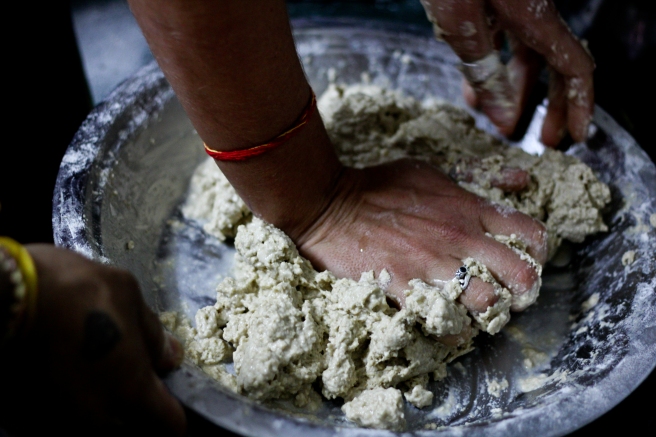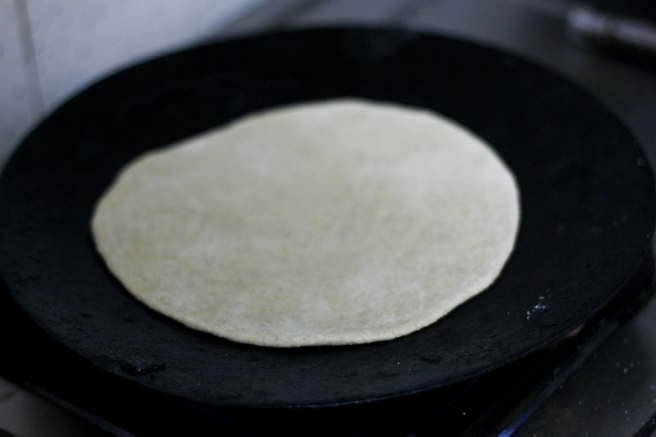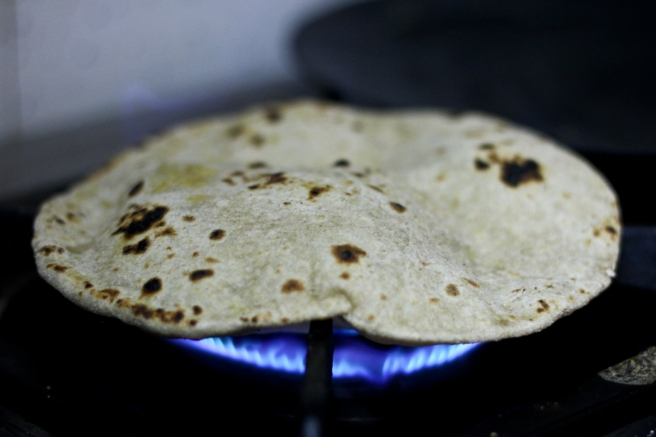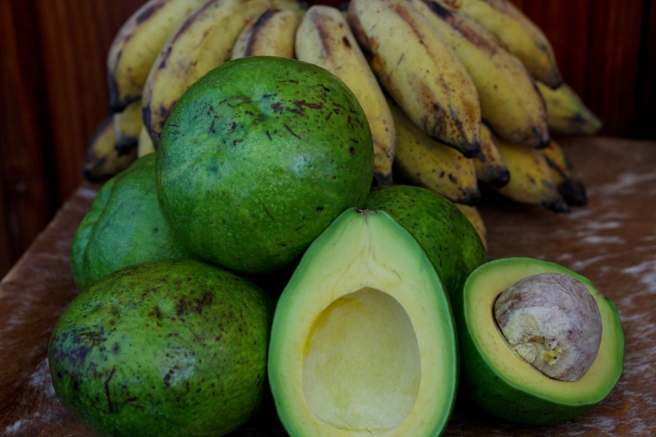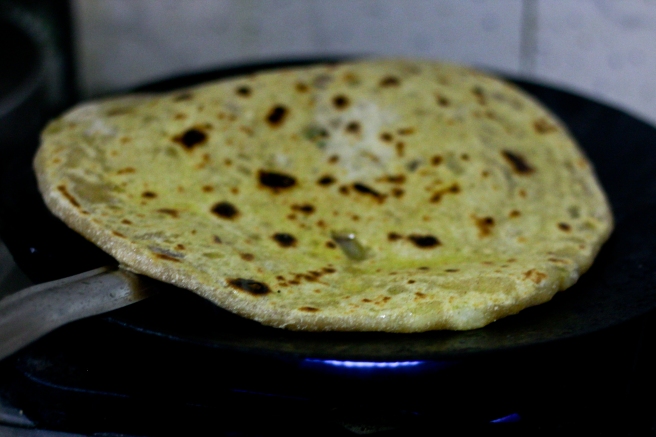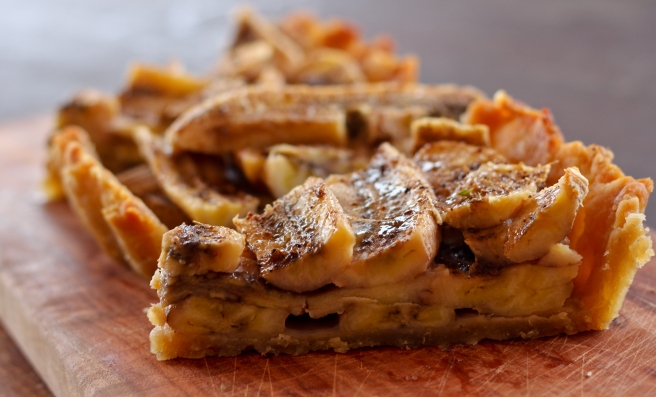I’m really into sourdough. I love greeting my levain, or starter, in the morning when it’s all active and bubbly after a night of quiet fermentation; I love the sweet honey/wine smell of proving dough in the kitchen; I love the satisfaction of lifting fresh, hot, baked delights from the oven after a day of nurturing them from levain to loaf.

Sourdough makes great bread, but the same starter can be used to create other doughs, like delicious tangy, chewy pizza bases. A previous post gives the recipe for our buckwheat and pumpkin pizza base, which is quick and delicious and gluten-free, but if you’re after something with a more traditional texture and are willing to invest a little time (and culture!) into your dough, then give this a go!
For a pizza base big enough for two or three, take:
- 1 heaped tablespoon of active* sourdough starter (see this recipe to make your own)
- 150 mL warm filtered water
- 1. 5 cups flour + more for kneading (I use freshly ground wholewheat, but spelt, rye etc., or a combination of several flours, will do)
- 1 teaspoon good quality salt (I like unbleached Australian seasalt)
- 1 tablespoon olive oil
Preparation: 15 minutes
Proving/waiting: 6 – 9 hours
Cooking: 30 minutes
- In a ceramic or glass bowl add a large spoonful of active sourdough starter to warm water. The levain should float a little in the water until stirred through. Slowly add 1.5 cups of flour, stirring until combined. Cover the bowl with a damp cloth and leave for about an hour.
- After an hour, sprinkle dough with flour and knead into a ball with the seam at the bottom. Cover again with a damp cloth. If you are home during the day, go onto step 3, but if you aren’t you can skip the kneading and go straight to step 4.

knead dough into a ball and cover - This part is optional, but the more times this step is repeated, the lighter and chewier the dough will become! Approximately each hour, for four to six hours, sprinkle flour over the dough and knead briefly. Reshape into a ball, with the seam at the bottom, and cover with a damp cloth.
- After 4 to 6 hours of the first proof, the dough should be soft and pliant. Add salt and olive oil, and knead again to combine these. On a floured surface, roll dough flat to a thickness of about 3 – 5 mm, into the shape desired (i.e. the shape of your baking tray!). Place on an oiled, floured tray and cover again with a damp cloth. Leave for two to three hours to prove again.
- After a few hours, the pizza base should have softened and risen a little. Turn the oven on very hot, and bake the pizza base for about 5 minutes. Remove, brush with a little more olive oil to stop the crust going soggy, and cover with delicious toppings (my favourite flavours tend to involve loads of chilli, garlic, and lemon…). Return pizza to the hot oven and bake until your toppings are done and the base is brown and crispy around the edges.
- Enjoy fresh and hot, eaten with your fingers and shared with friends!

* Activating your sourdough starter: Remove your starter from the fridge the night before you want to use it. Activate by feeding it a little fresh flour and water (simply stir equal parts of both into the starter with a wooden spoon), and leaving the jar covered with a cloth overnight. You should wake to find a cheesy/winey smelling starter that has grown in size and is nice and bubbly. It’s now ready to use.











